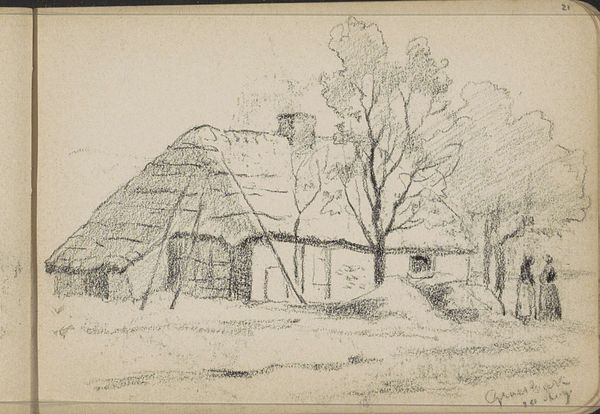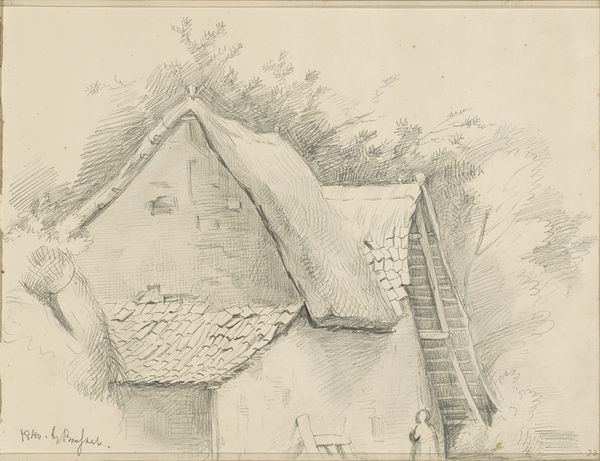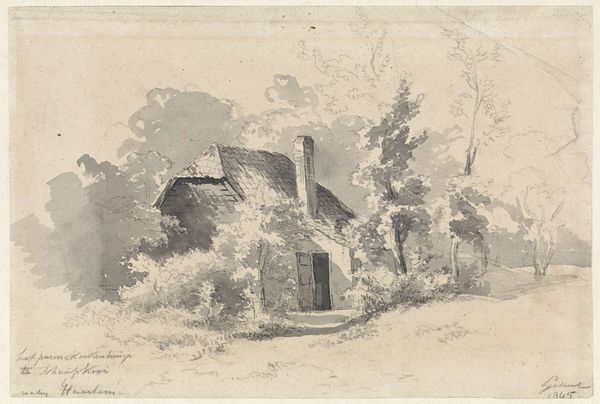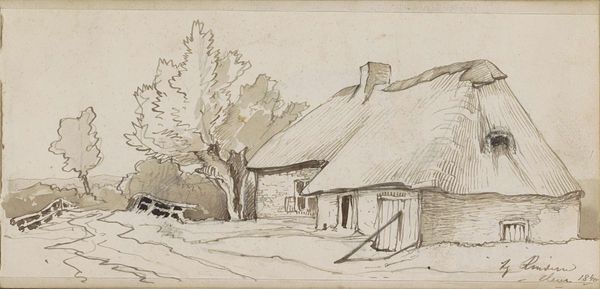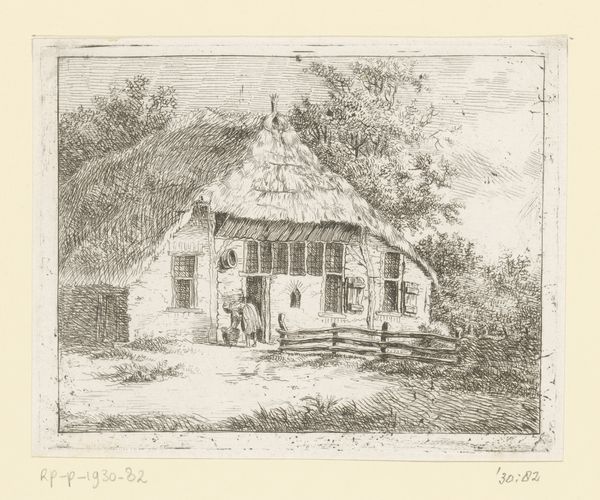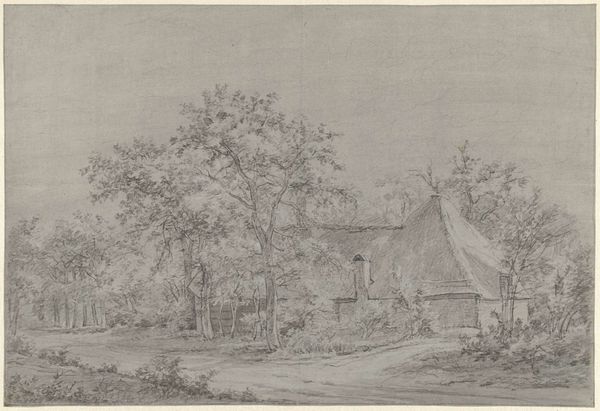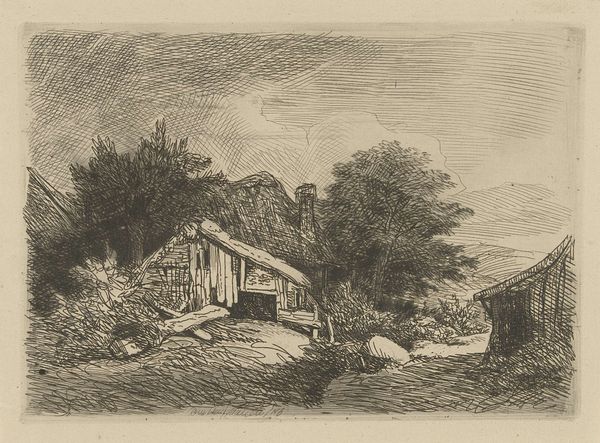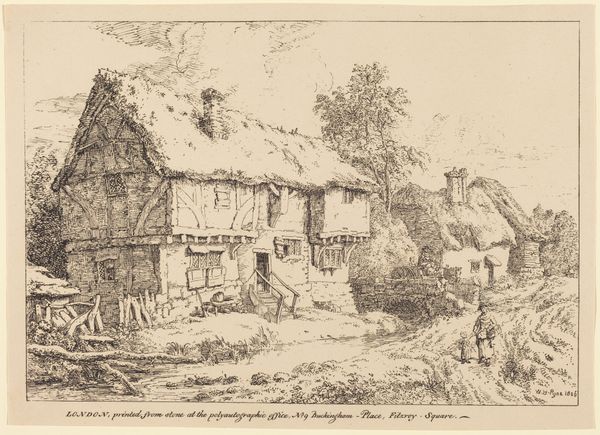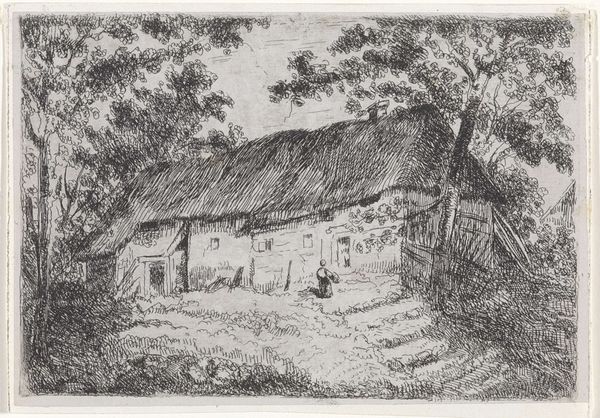
drawing, paper, pencil
#
drawing
#
pencil sketch
#
landscape
#
paper
#
pencil
#
genre-painting
#
realism
Copyright: Rijks Museum: Open Domain
Curator: This drawing, simply titled "Villa op het platteland," or "Villa in the Country," was created by Maria Vos around 1863 or 1864. Editor: There's a quietude about this sketch. It's all soft pencil lines, like a half-remembered dream of a cottage swallowed by nature. The overgrowth makes the architecture look almost secondary. Curator: Indeed, the way Vos uses the pencil—especially in rendering the foliage—hints at a fascinating material conversation between nature and building. This work demonstrates an exercise in mark-making through accessible means. Editor: Looking at the thatched roof, I wonder about the hands that laid each strand. And where did the materials come from? Was the villa meant as a retreat, or was it somebody's everyday world? Curator: That consideration really hits the core of genre painting; finding the extraordinariness in ordinariness, so to speak. You get a sense for this villa just being part of the world. It grows out of the soil as surely as the vegetation around it. There’s such ease, and flow. I can almost hear the wind rustling the leaves. Editor: The limitations Vos accepted—pencil on paper—made for direct engagement with the world she depicts. There's also something to be said for the constraints it might have imposed; the economics, in the access to suitable supplies. Curator: It’s remarkable what she could evoke with what appears to be so little! It speaks to the potential power of subtle interventions. A humble villa transformed into an evocative scene. Editor: Ultimately, for me, this isn't simply about an aesthetic interpretation; it is about material realities, considering artistic production alongside the social, economic, and industrial infrastructures of the time. Curator: Yes. To me, this drawing whispers of nature's persistence. It invites us to contemplate our relationship with the landscape—its wild beauty and inevitable reclamation. Editor: It leaves me curious about the unseen labor of construction.
Comments
No comments
Be the first to comment and join the conversation on the ultimate creative platform.
